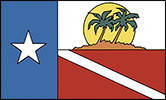Rebreathers used to be only for technical diving, but not any more. New Type R (recreational) rebreathers are lightweight, easy-to-transport and have sophisticated electronics to simplify their use. Why dive a rebreather? You get longer no stop limits, reduced gas consumption because you reuse most of your exhaled gas, and unmatched wildlife encounters because you don’t release annoying bubbles. The Rebreather course introduces you to rebreather diving to a maximum depth of 18 metres/60 feet and lets you experience things you never imagined possible as a scuba diver.

Through self-study and instructor-guided sessions, you’ll learn how rebreathers work and the importance of proper setup and maintenance. Because rebreathers vary significantly, you’ll also study the manufacturer’s literature for the type of rebreather you’ll train on. During six dives, you’ll work on:
Performing proper predive checks
Developing the habit of keeping the loop closed when the mouthpiece is not in your mouth
Doing bubble checks, bailout drills and handling other potential problems
Fine-tuning buoyancy control
Monitoring displays and gauges
Post-dive procedures and disassembly
